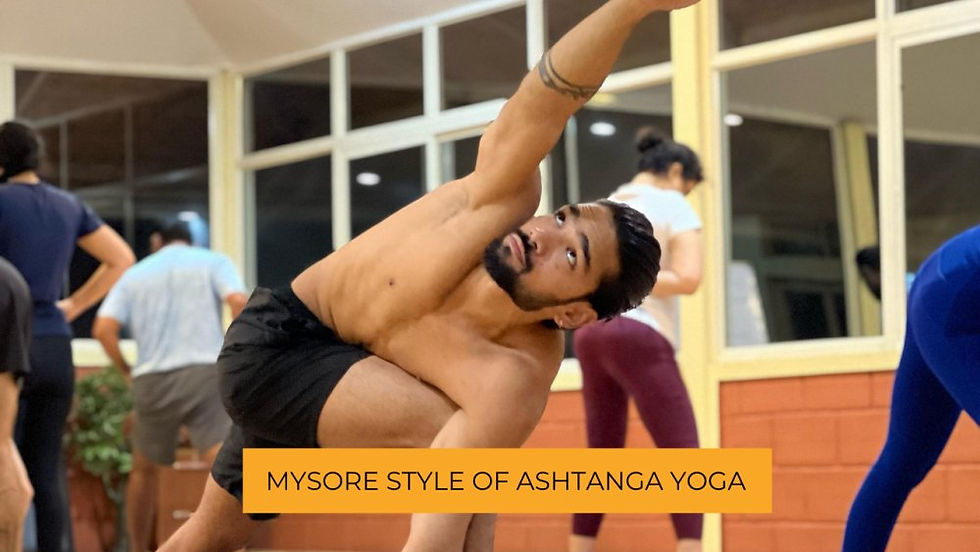Voice of a Yoga Teacher – Can my voice influence the outcome of my Yoga Class?
- Yogacharya Rakesh

- Feb 24, 2015
- 4 min read
Updated: Jul 18, 2022
Have you ever heard yourself after speaking or recording your voice? Many feel that their voice is totally different from what they hear normally or what they feel their sound would hear like. Does this happen to you too?
Then for sure as a Yoga Teacher, you might wonder how your voice would be heard when you teach. Is it good or bad; audible or not; rough or soft; base pitch or high pitch …?
These are few simple questions that that might arise as a Yoga Teacher or ‘to-be-yoga teacher’
Yes, the voice of a Yoga Teacher will have a great impact on the outcome of every Yoga class that you conduct.
As a yoga teacher, I always wonder how we can use our voice as a tool to enhance the results of our yoga session to make our students happy and feel that yes they heard what they are supposed to hear.
I personally found five major factors that were helping my voice in a better way to give a positive outcome.
We should know how to use our voice properly during a yoga session and also during other times to have the best communication happen.
Without lengthening my blog I right away mention the five aspects to remember when we speak during our yoga sessions.
1. Breath – Breathe properly. Success will flow slowly.
Communication is possible only if breathing happens. Breath/Prana in yogic terminology is considered to be the advocate of our communicative words. Anatomically, our voice depends upon the efficiency of our breathing.
Our breathing in turn depends upon the efficiency of our lungs. We should, first of all, know how to breathe during a yoga session.
As Yoga Teachers, we might have to speak a lot so we need a lot of energy for that which we might have to channelize through our breathing to all our cells. So complete ‘yogic breathing’ is a good technique to practice to improve lung capacity.
While teaching, use all your lungs to fill in the air and let the diaphragm be moved as you fill the lower lungs.
Short breath means only the upper lungs are filled which is otherwise known as clavicular breathing which might cause the squeezing of the throat and voice might not come out properly.
Young naive Yoga Teachers find it very difficult to breathe completely due to stress or tension or anxiety about the success of their teaching session.
2. Asana – Know your asana and make your vocal gesture
Every word spoken might help the students guess the asana or posture that you are in. If you are not comfortable in any posture that you demonstrate, that for sure, will result in giving a major impact on your voice.
For example, if you have not warmed up for the morning session and try demonstrating sun-salutations for three rounds with explanations, then the flow of Asanas will impact your breath and in turn your voice.
The impact of Sun-Salutations on your breath will speak a lot about your practice than what you say to students about it.
Every movement that we make has an impact on our voice. We cannot speak normally when we stretch our neck back for Ushtrasana (Camel Pose) or Purvottanasana (Upward Plank Pose).
To know and understand the impact of the postures on your voice and speak accordingly.
3. Volume: your volume stands as a success key of your yoga class
The physical consciousness of your students in each asana depends upon the voice that leads them and keeps them focused on their practice.
If your volume is low and not audible, that certainly lets your student withdraw from their focus.
Using your voice at its suitable volume is a very important tool to command the attention of your students on what you speak and convey.
Every word that we speak should have an exact volume that is audible to each and every student present in your class.
4. Diction: Expressions of words
Communication happens at its best when every thought is expressed with exact wordings phrased with the best choice of words and delivered with the best style possible.
So it is very much important to be choosy with the words that you use to guide your students in every posture.
For example, in Adhomukha Shvanasana (Downward Dog), you expect your students to have a straight spine and shoulders not tight.
When they are in downward dog pose you can deliver the same as a command that follows – “inhale: come up on your toes | engage your palms | roll the deltoids out | lengthen your spine | push your seat muscles up towards the ceiling |exhale: bring the heals down on the mat | use your core… etc.
5. Modulation – Let your words flow smooth and precise
Once you understand the pose, have proper breath timing and are using exact words while delivering the command with a proper voice, another important ingredient to add is the ‘voice modulation’.
Modulation of the voice and its tone while delivering your commands will make your guidance perfection-packed.
Chosen words can be elongated, stressed, sharpened with our voice and beautify your commands which will, in turn, keep all your students focused on what they listen, see and practice.




Comments